ASUS at CES 2019: ProArt PA32UCX 4K Monitor with 1000-Zone FALD Unveiled
by Anton Shilov on January 11, 2019 5:00 PM EST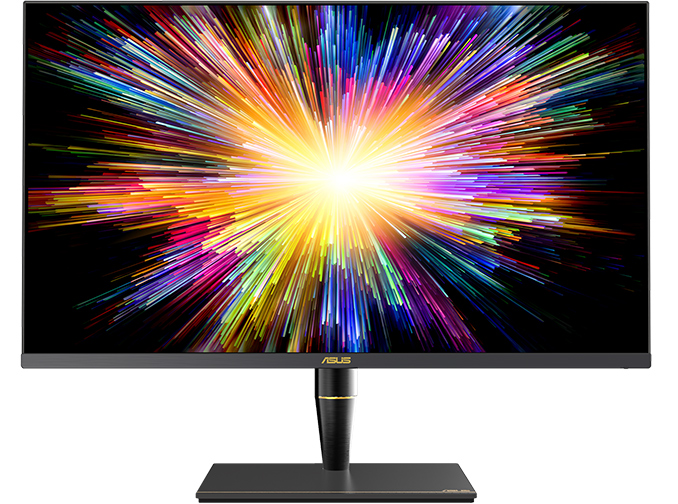
ASUS introduced its new flagship professional display at CES. The ProArt PA32UCX supports everything that one might expect from a 2019 professional monitor, including a 4K Ultra-HD resolution along with support of the DCI-P3 and Rec. 2020 color spaces as well as Thunderbolt 3 connectivity, but its key feature is a unique FALD backlighting with 1000 zones.
The ASUS ProArt PA32UCX monitor is based on a 10-bit 32-inch IPS panel that can reproduce 1.07 billion colors and features a 3840×2160 resolution presumably at 60 Hz. The custom panel is outfitted with an exclusive Mini LED-based backlighting that enables 1200 nits peak brightness as well as a 1000-zone full array local dimming (today’s leading-edge LCDs feature a 384-zone FALD) as well as 0.003 - 0.001 nits lowest luminance. To control the backlighting, ASUS had to order a custom display scaler and then test it for months to hit the right contrasts, color uniformity, and other targets it needed.
The manufacturer says that the ProArt PA32UCX display covers 97% of the DCI-P3 as well as 89% of the Rec. 2020 color spaces used for video post-production nowadays. Besides, it supports HDR10 as well as hybrid log gamma (HLG) HDR formats, but ASUS says nothing about Dolby Vision support. Since the monitor is only announced formally, ASUS does not disclose any details regarding its internal 3D LUT (look-up table) for HDR color gradations, but I would expect something very professional grade (e.g., 24-bit, which is more accurate than 14-bit). Meanwhile, ASUS says that the ProArt PA2UCX not only meets, but exceeds requirements for VESA’s DisplayHDR 1000 logo.
As far as connectivity is concerned, the monitor has one DisplayPort capable of DCI-4K with 4:4:4 chroma subsampling at 50/60 Hz, two Thunderbolt 3 ports capable of the same capability (and supporting daisy chaining), as well as an HDMI 2.0 input capable of DCI-4K with 4:2:2 at 50/60 Hz.
| Specifications of the ASUS ProArt Mini LED Display | |
| ProArt PA32UCX | |
| Panel | 32" IPS |
| Native Resolution | 3840 × 2160 |
| Maximum Refresh Rate | 60 Hz |
| Response Time | unknown |
| Brightness | 1200 cd/m² (peak) |
| Contrast | high |
| Viewing Angles | 178°/178° horizontal/vertical |
| HDR | HDR10, HLG |
| Backlighting | Mini-LED-based 1000-zone FALD |
| Pixel Pitch | 0.1845 mm² |
| Pixel Density | 138 ppi |
| Display Colors | 1.07 billion |
| Color Gamut Support | DCI-P3: 98% Adobe RGB: ? Rec. 2020: 80% sRGB: ? |
| Aspect Ratio | 16:9 |
| Stand | Hight, Tilt, and Swivel adjustable |
| Inputs | 1 × DisplayPort 2 × Thunderbolt 3 1 × HDMI 2.0 |
| USB Hub | ? |
| Launch Date | Spring 2019 |
ASUS plans to launch its ProArt PA2UCX officially this Spring, but the company does not specify when exactly. Meanwhile, it should be noted that it takes ASUS a long time to finalize its high-end monitors. Traditionally, the manufacturer does not pre-announce MSRP of the display, but since we are talking about a 32-inch LCD with a unique 1000-zone Mini LED-based FALD, it will cost thousands of dollars.
Related Reading:
- ASUS ProArt PA32U Display: 4K, 1000 Nits Brightness, 95% DCI-P3, 85% Rec. 2020
- ASUS Unveils ProArt PQ22UC OLED Monitor: 4K, 99% DCI-P3, 0.1 ms Response Time
- EIZO Announces ColorEdge Prominence CG3145: 4096x2160, 98% P3 and HDR10
Source: ASUS


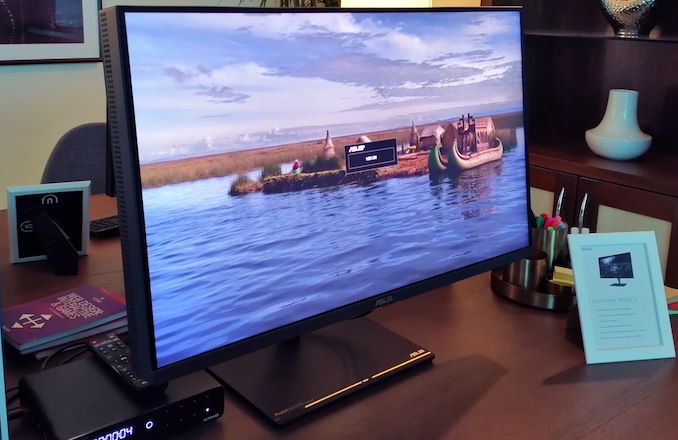
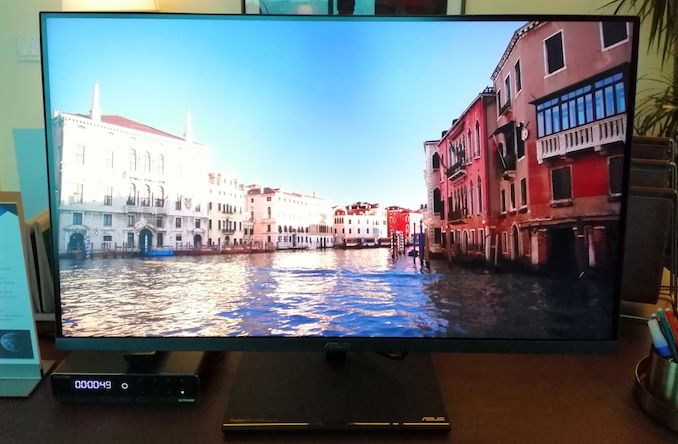

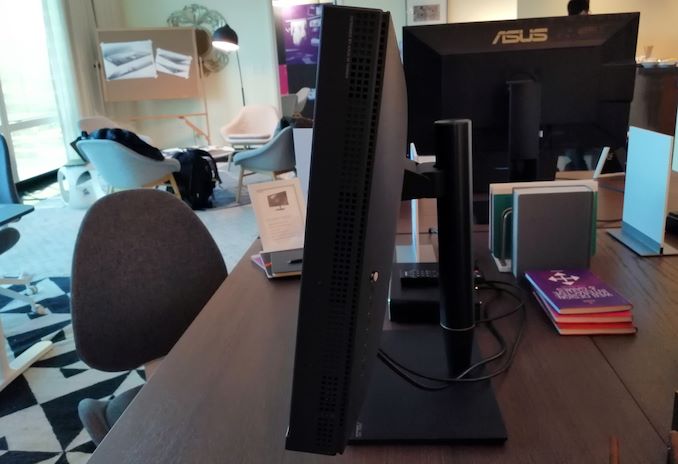
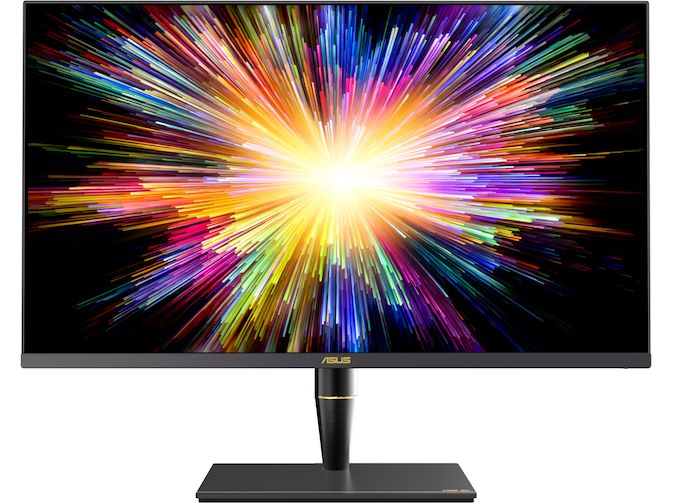








33 Comments
View All Comments
lilkwarrior - Thursday, August 22, 2019 - link
Giving up hope for OLED monitors? You'll see those far more likely in the next years than a MIcroLED that will probably cost at least 3x time more ATM.norazi - Saturday, January 12, 2019 - link
Its just a stop-gap solution like hybrid engines in a car. Once micro/miniLED hits full production, even OLED will go the way of plasma techMattMe - Sunday, January 13, 2019 - link
That might be true, but we're only starting to see engineering samples of microLED tech, bar a few ultra-high-end large screens. It's 5 years away from coming to semi-affordable consumer monitors, at least.Lau_Tech - Sunday, January 13, 2019 - link
Micro led has limitations as it is very hard to manufacture and arrange leds that are that small, into a small space.Micro led in a PC display would mean squeezing 8million or more leds in 30inches or less. Current PROTOTYPES are more than twice that size. By the time they shrink the leds enough to hit 4k in 30inches, the market might have moved on to 8k, or oled displays become so cheap that micro led RnD would be seen as a fools errand.
I feel comfortable in stating that in the portable computing space (laptops and mobile,), micro led will not be a factor for the coming decade. Mini led is likely to recieve the bulk of research focus and development
Lord of the Bored - Monday, January 14, 2019 - link
As soon as SED, I mean OLED, I mean MLED gets here...I'm sick of waiting. We've been promised an LCD replacement that gets us back to CRT performance is right around the corner for twenty years now.
DanNeely - Monday, January 14, 2019 - link
The 1000 zone backlight in this is mini-LED. Except for the largest jumbotron's mini-LED is far too large for individual pixels on a high resolution display. Micro is closer, but the closest in production is a Samsung ~80" 4k TV. Even assuming high end computer screens don't go 8k first, that's still a linear factor of 2.5-3x too large (6-9x in terms of area). Unless/until that happens all micro-led could do is to ramp the number of zones in a FALD backlight even higher. To be fair that might be good enough, Samsung's current micro LEDs could theoretically make a 4x4 pixel zone side backlight with 500k zones; which would be enough to mostly eliminate the glow bleeding out around bright objects.dontlistentome - Saturday, January 12, 2019 - link
4k at 32" is great for a genreal purpose display (100% scaling in windows) but for professionals?Surely 4K @ 22" / 5K @ 27" is more like it so really need 6-8K at 32" to get higher res? This is pretty low for designers, and need something much higher for video so you can run 4K unscaled in a window for video.
Lovely screen though, would love one in my office while I wait for 8K screens at this size to get sensible (2 years?).
digiguy - Sunday, January 13, 2019 - link
the 4k 22 OLED is coming, they announced it a while ago and I'll waiting for it...Valantar - Sunday, January 13, 2019 - link
Pixel density so high you can't make out the details at normal viewing distances doesn't help anyone, profesional or otherwise. I doubt any video editor would want 1:1 pixel mapped 4k in their timeline preview, as it's simply not necessary - a resource hog with no real benefit. You either use a secondary monitor for full screen viewing, or go full screen when needed to check details. With higer DPI, you'd instead have to lean close to the monitor to check details, which is a really bad solution for a profesional setting.5k would no doubt be appreciated by some, but it robs you of the ability to view unscaled video full screen, which is a big deal.
For CAD designers or others who do intricate and precise line drawings I could get the need for more sharpness and higher resolution, and possibly photographers (but the "have to lean in" problem applies there too), but for everyone else the value of increased DPI drops off noticeably as DPI increases.
Dug - Wednesday, January 16, 2019 - link
4k on 22" is not a professional display that anyone wants.4k on 32" is not low for designers.
I'm not sure what planet you live on, but please show us where those statements are true.